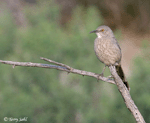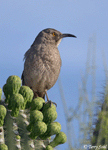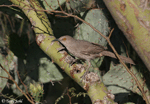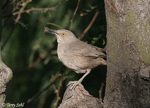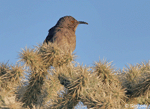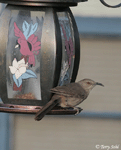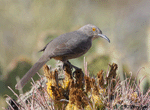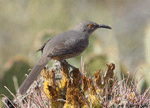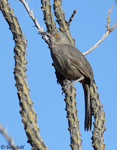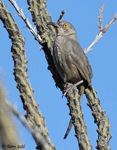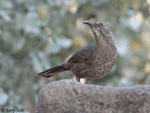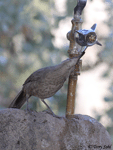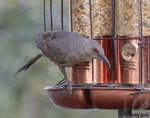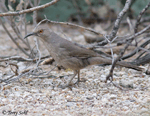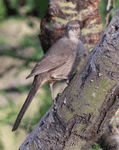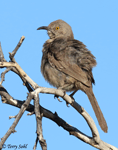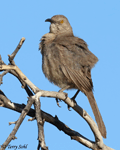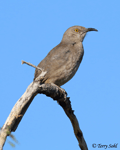| Length: 11 inches | Wingspan: 14 inches | Seasonality: Extremely Rare Visitor |
| ID Keys: Curved black bill, orangish eyes, grayish-brown upperparts, weakly spotted underparts | ||
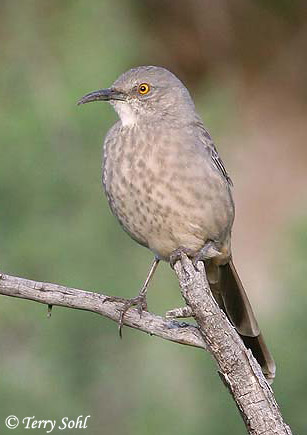 The Curve-billed Thrasher
is normally a bird of the arid Southwest, and only rarely ranges outside of that
region. They are extremely rare visitors to South Dakota. They are
less shy than some of the other Thrashers, and are even a common sight in
residential areas of the Southwest, provided their favorite breeding site,
cholla cacti, are available. Of the large thrashers of the arid Southwest,
the Curve-billed is the most common and well known.
The Curve-billed Thrasher
is normally a bird of the arid Southwest, and only rarely ranges outside of that
region. They are extremely rare visitors to South Dakota. They are
less shy than some of the other Thrashers, and are even a common sight in
residential areas of the Southwest, provided their favorite breeding site,
cholla cacti, are available. Of the large thrashers of the arid Southwest,
the Curve-billed is the most common and well known.
Habitat: Found in desert habitats of the Sonoran desert, although it avoids the driest of locations with little or no vegetation. Also found in arid brushlands of the Southwestern U.S., and in suburban areas.
Diet: Insects and berries. Also feeds on the seeds of prickly-pear and saguaro cactus.
Behavior: Primarily forages along the ground, digging in the soil with its beak, turning over rocks, or chasing insects.
Breeding: Non-breeder in South Dakota. In range, the nest is a large cup of twigs, grasses, feathers, and other material, usually built in a cactus such as a cholla cactus, or sometimes in a shrub or small tree. The female lays between 2 and 4 eggs, and both parents help to incubate them. Upon hatching, both parents help to feed the young. They will often raise more than one brood per breeding season.
Song: Repeated clear warbling phrases.
Migration: A permanent resident of the southwestern United States and Mexico, they rarely wander outside of their normal range.
Interactive eBird Map: Click here to access an interactive eBird map of Curve-billed Thrasher sightings
Similar Species: Sage Thrasher, Bendire's Thrasher
Conservation Status: Generally stable throughout most of its normal range. The Curve-billed Thrasher is listed as a species of "Least Concern" by the IUCN.
Bird Feeders: Will come to feeders for fresh fruit.
Further Information: 1) Patuxent Bird Identification InfoCenter, Curve-billed Thrasher
2) WhatBird - Curve-billed Thrasher
3) Audubon Guide - Curve-billed Thrasher
Photo Information: September 13th, 2006 -- Near Tucson, Arizona -- Terry Sohl
Additional Photos: Click on the image chips or text links below for additional, higher-resolution Curve-billed Thrasher photos.
| Click on the map below for a higher-resolution view |
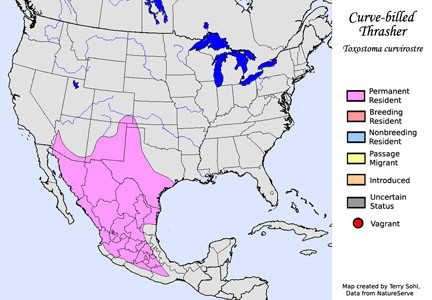 |
| South Dakota Status: Extremely rare visitor, with just a handful of records in the state. |
Additional Curve-billed Thrasher Photos
Click for a higher-resolution version of these photos
